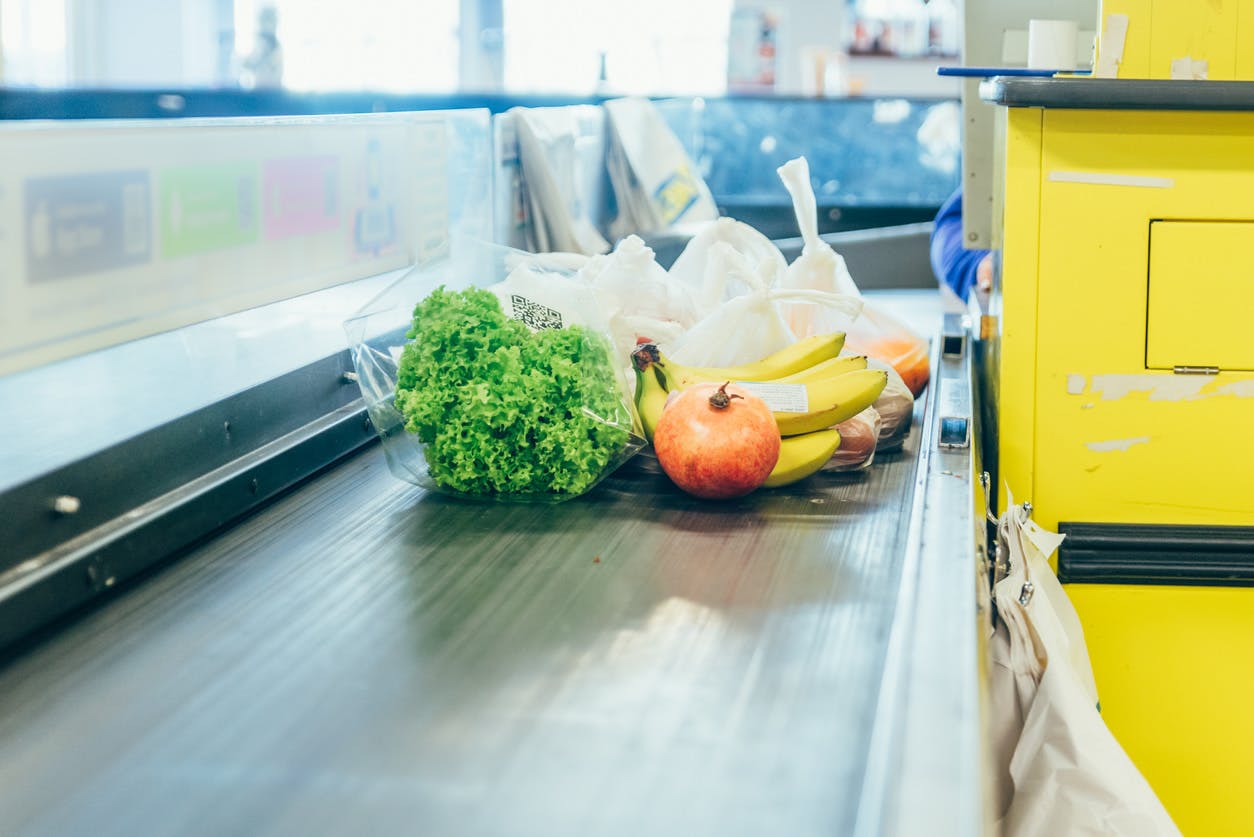August 18, 2020
Even before the COVID-19 pandemic, consumers were increasingly shopping for groceries online. In 2018, 23.1% of consumers placed some online grocery orders, and these sales grew by 22% in 2019. With the coronavirus pandemic in 2020, online grocery orders are estimated to grow at least 40%. More than half of consumers polled mid-March – 52% – reported buying groceries online, with additional consumer demand anticipated: 62.% polled said they planned to make these e-commerce grocery purchases.
It’s not surprising that Amazon, with its large distribution centers, would lead the pack in terms of stores where consumers have placed e-commerce or online grocery orders in the past year, with Walmart not too far behind. But traditional grocery stores are making a dent in the market, especially as they increase their micro-fulfillment center capabilities.
Retail stores offering an omnichannel experience with in-store and online order fulfillment (via curbside pick-up or grocery delivery) stand to help their brands and bottom lines. Initially, retail stores in the grocery industry fulfilled orders by store employees or a contractor, shopping the aisles alongside customers. This can add to the labor cost, especially if the costs aren’t fully paid by the consumer. But as grocery retailers add robotics and warehousing solutions, e-commerce fulfillment will get more efficient and a grocery chain can increase orders and customer loyalty.
Micro-fulfillment centers
A grocery chain can do order fulfillment from their aisles, or they can consolidate the e-commerce orders from a micro-fulfillment center (MFC). That’s why grocery retailers like Albertsons, Stop & Shop, Ahold Delhaize, Kroger, Safeway, Wakefern and Sedano’s have been building micro-fulfillment systems in some regions.
Advantages of the MFC approach is the ability to fill orders more quickly in a smaller warehousing environment, using fewer square feet and less real estate than the larger facilities. MFCs are able to serve urban areas with convenient home delivery. Given that the MFC is closer to the consumer, that lowers the distance for the last mile. Home delivery is more convenient and less costly than delivery from larger distribution centers. An MFC can hold an estimated 15,000-18,000 SKUs.
What micro-fulfillment systems look like
The micro-fulfillment systems include a combination of robotics and automation, with some manual human picking and packing. They use a storage structure with bins. The computer system signals the robots to move the bins to the picker, who takes items from the bin and puts them into the crate or box. The initial bins move back to their locations.
The MFC has different minimum square feet requirements and numbers of items they can pick in a certain timeframe, depending on the company. For example:
Alert Innovation needs at least 8,000 square feet for an MFC, and can fulfill 50 items in 6 minutes.
Dematic requires 10,000 square feet, and can fulfill 62 items in 5 minutes.
Takeoff Technologies needs 10,000 square feet, and can fulfill 62 items in 5 minutes.
Fabric (formerly CommonSense Robotics) requires 5,000 square feet for an MFC, and can fulfill 60 items in 10 minutes.
These companies are building or have buildings in the United States. Israeli company Fabric, which was the world’s first underground micro-fulfillment center, is building two facilities in New York City, and plans at least an additional dozen in the U.S.
Micro-fulfillment centers are one way to store inventory and fulfill e-commerce orders closer to your customer. For more warehousing and fulfillment solutions to improve supply chain and efficiency, contact us. Stord can provide end-to-end visibility of your supply chain, allowing your company to meet and exceed your benchmarks.




